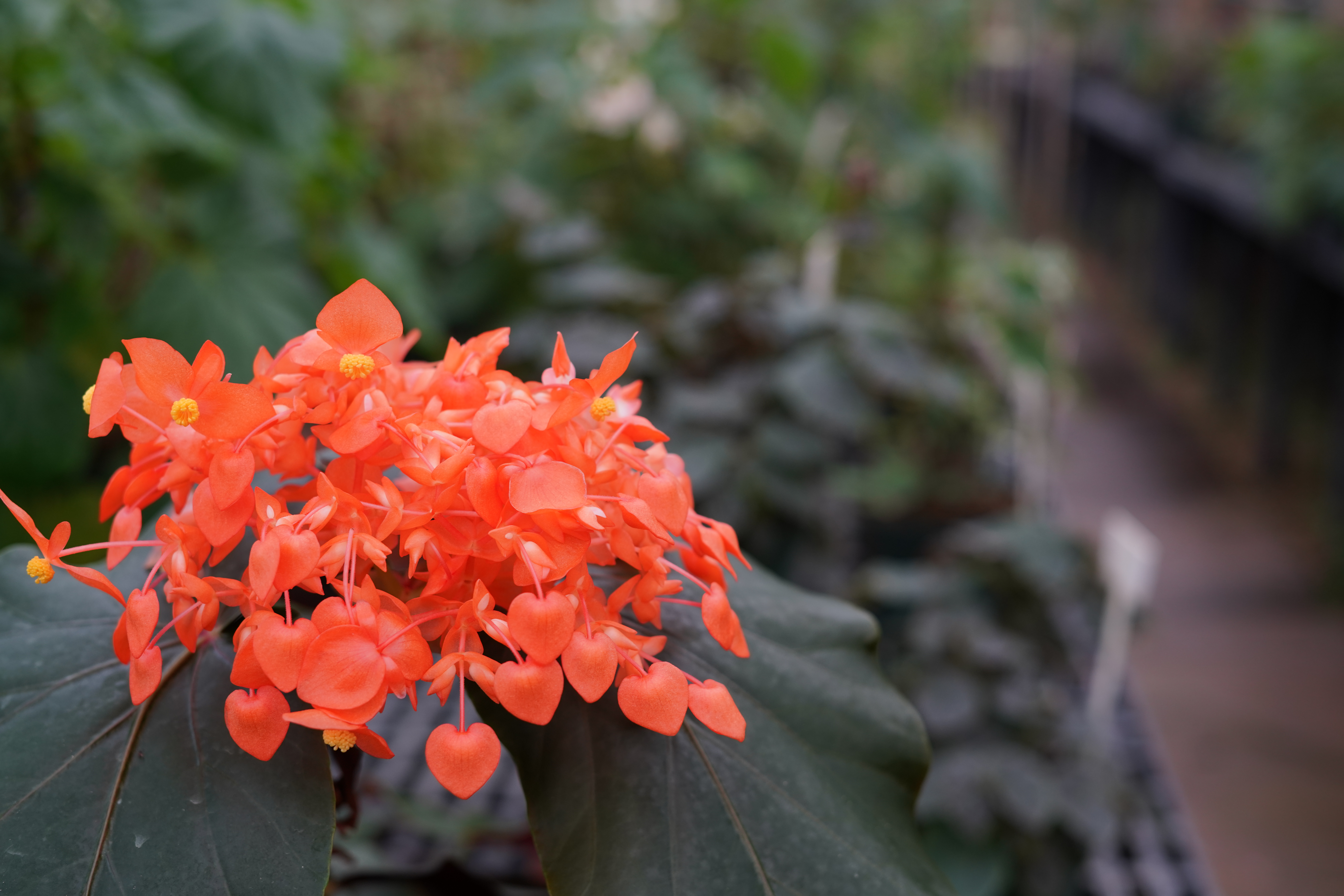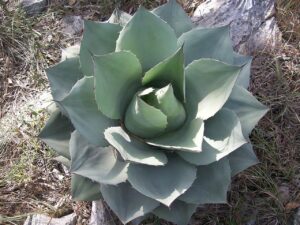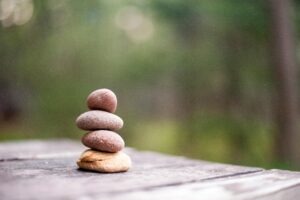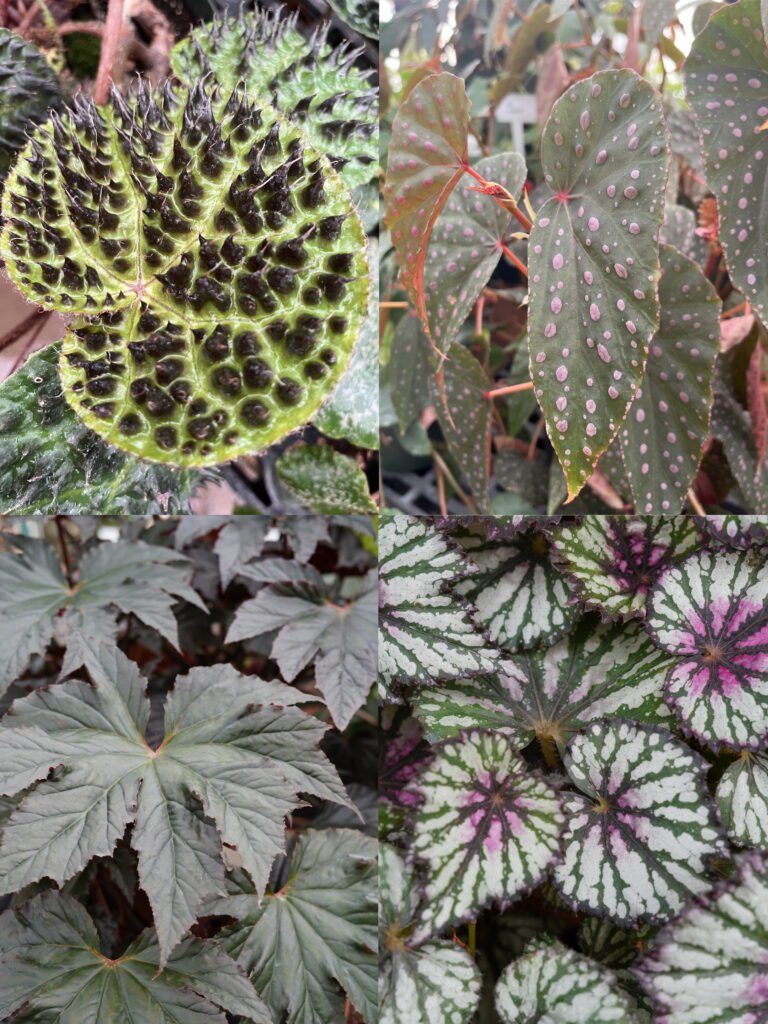
Midwinter is a quiet time outside in the Garden, with most plants dormant until the days grow longer. But in the greenhouses devoted to the Garden’s Begonia Collection, excitement is growing as these remarkable plants get ready to bloom.
“In a few weeks, the begonias will be in full bloom, and it’s a wonderful sight,” says Greenhouse Collections Coordinator Glenn Dickerson.
Native to tropical and subtropical regions of Central and South America, Africa and southern Asia, begonias are probably best known to North Texans as annual flowering plants that appear each spring at garden centers. These plants, usually a variety known as wax-leaf begonias, can provide reliable color, tolerate shady locations and survive high temperatures, if watered regularly and deeply.
However, wax-leaf begonias are only the the tiniest tip of the iceberg when it comes to begonias. These plants offer incredible variety with with rich colors, fascinating textures and amazing shapes. It’s easy to get hooked on begonias–and Fort Worth is a great place to do it, since our Garden hosts the largest accredited begonia collection in North America.
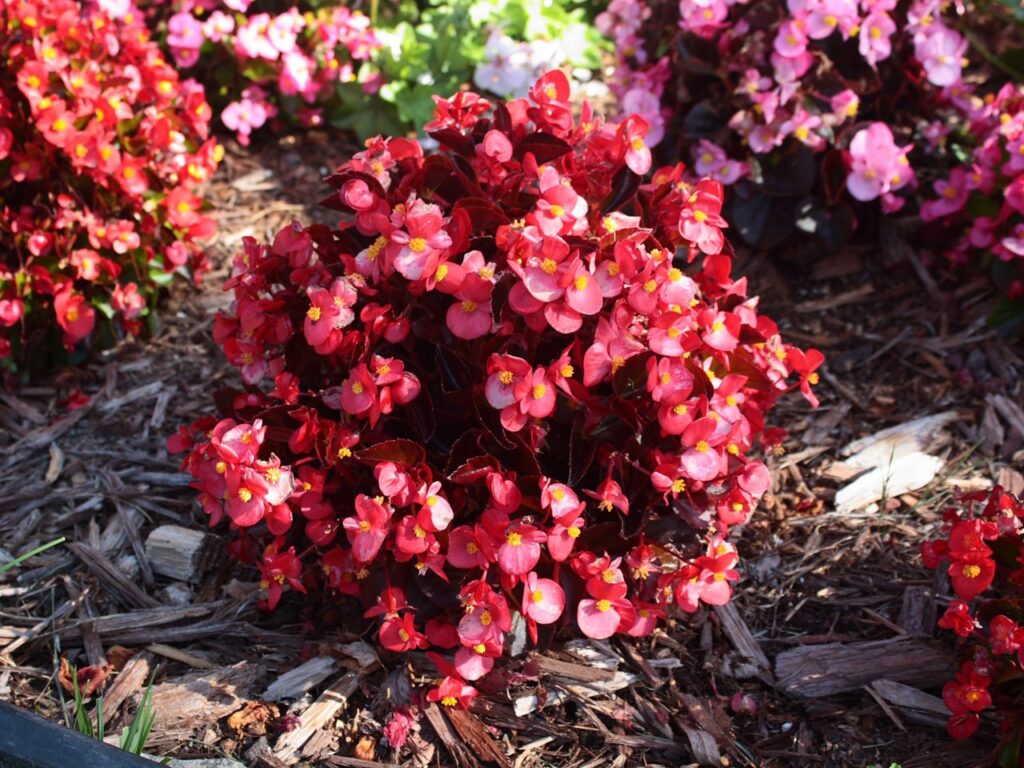
Growing Begonias
More than 2100 species and more than 15,000 hybrids are currently recognized in the begonia family, and new varieties are discovered every year. Just about everyone can find a begonia he or she likes.
Wax-leaf and angel-wing begonias are the two types most commonly found in garden centers and treated as annuals. Other varieties are primarily grown as houseplants or in greenhouses. The most popular indoor plants are prized for the rich variety of their foliage. Leaves can be long and pointed, small and rounded or thin and wispy; colors can range from silver and purple through every conceivable shade of green to bright red and almost black. Some leaves are striped and others spotted.
To get started growing begonias, Dickerson recommends shopping the biannual plant sales, which always features a wide selection of plants and expert advice from volunteers. Otherwise, varieties are available at local plant shops or online. Dickerson suggests checking out the journal of the American Begonia Society, The Begonian, for ideas, resources and ads from begonia vendors.
Dickerson offers this advice:
- Plant in well-draining soil. Look for soil intended for houseplants.
- Place in bright, indirect light. Direct sun is too much for most begonias, but they need good light. Dickerson recommends north- or south-facing windows.
- Water wisely. Begonias don’t want to sit in water, Dickerson says. They want water to run through the pot and leave the soil moist, but they don’t want to sit in it. Water plants when the top half of soil in the pot feels dry to the touch. “If the soil is so dry it’s separating from the wall of pot, you’ve waited too long,” Dickerson says.
- Increase humidity. Begonias grow in rainforests, so they prefer more humidity than most people have in their homes. If the edges of the leaves of your plant are turning brown and crisp, the problem is not watering but humidity. One solution Dickerson likes is to fill a shallow plate or saucer with pebbles or pea gravel and place the pot on top. Then fill the saucer with water just up to the gravel line. (Do not set the pot itself in water–that will get the roots wet.) As that water evaporates, it will provide the plant the necessary humidity.
- Fertilize regularly. Begonias need fertilizing more than most houseplants. At home, Dickerson uses slow-release fertilizer so he doesn’t have to worry about it as often. In the Garden’s greenhouses, plants are fertilized three weeks out of the month and given regular tap water the fourth.
The Begonia Collection

The Begonia Collection got its start in 1984 when volunteers and staff began collecting seeds, cuttings and plants from members of the American Begonia Society. The collection began with 30 plants; today it contains roughly 4000 plants total, including representatives of 2000 species plants and 2000 hybrids.
Dickerson maintains the collection with the help of a team of dedicated volunteers. They check the health of the plants daily, water each plant according to its individual requirements, monitor for pests and disease and nurse sick plants back to health.
Conservation is a big part of the work. More than 90 species of begonias are listed as threatened by the IUCN (The International Union for Conservation of Nature). The collection houses 15 percent of these species, including one that is extinct in the wild.
The collection hopes to expand its conservation efforts by collecting begonia plants in the field. This requires special permits from the U.S. Department of Agriculture, since the United States limits the importation of live plants to prevent the spread of invasive plants or insects. Dickerson is working with the Research team to accompany them and hopefully bring back begonias collected on field trips worldwide.
Guests are welcome to tour the collection. Garden members are invited to tours generally held once a month; sign up for the January tour online. Otherwise, tours are held on request; call 817/463-4160 or email info@brit.org to schedule a tour.
“We are always excited to show off the collection,” says Dickerson. “Now is a great time check out the begonias as they burst into bloom.”

